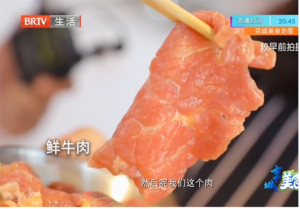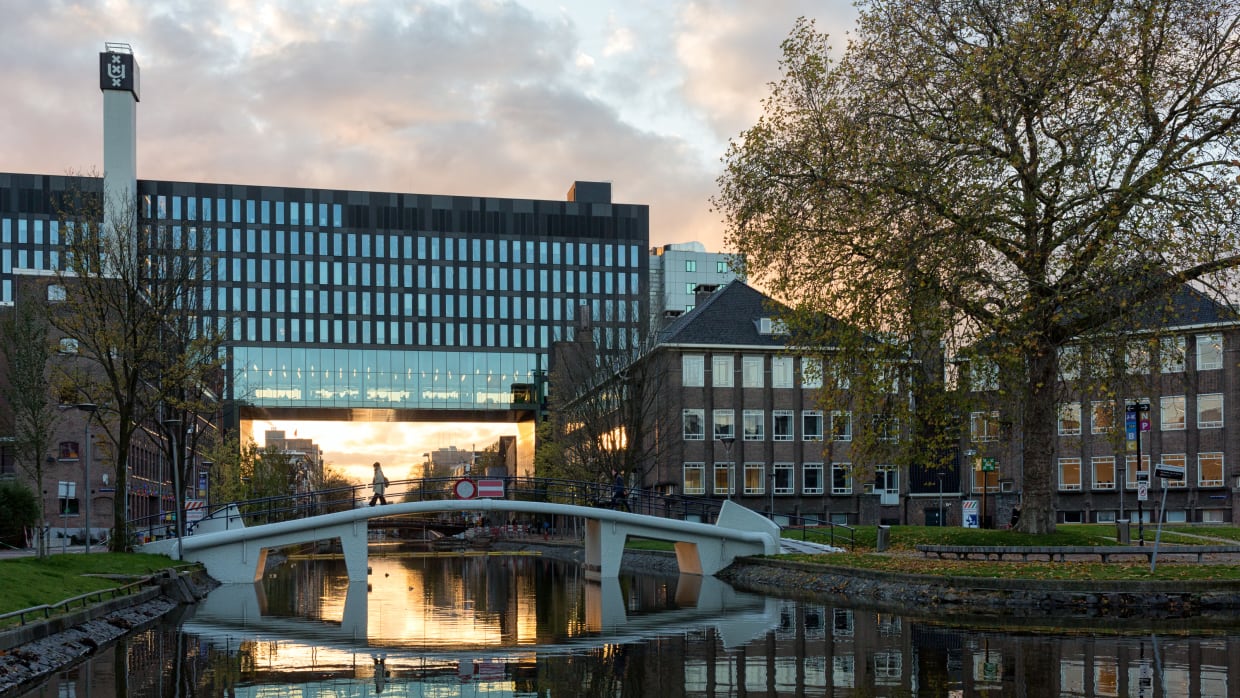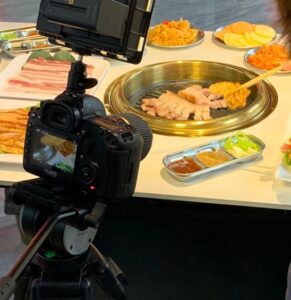During my internship at the TV program “Beijing Gourmet Map” of Life Channel at BRTV, I was able to broaden my horizon regarding knowledge about tv show production in today’s media environment.
Finally opened– the shooting on site
At the end of June, dine-in was resumed and so did the tv show shooting. What is special about the show is that it not only introduces the restaurants, but also explores the stories behind gourmets through conversations with the boss of the restaurant. For the BBQ restaurant “Xiao Ran Di Tan Shao Kao”, the story relates the history of how different ways of cooking the beef are combined, including the Korean, Beijing, and Qiqihar (a northeastern city of China) styles. The story from the boss of the Wuxi cuisine restaurant “Hui Shan Jiao Xia Wuxi Wei Dao” attracted the listeners’ attention focusing on a popular dish named “Ma De Tiao”, which remained with the traditional light taste, specialty of Wuxi cuisine, while adding numbing and spicy flavour to cater to the modern young people. Generally, the director writes the screenplay, which includes the interviews, the shooting of food (dish as well as ingredients) and the restaurant environment, and some scripts for the MC and the interviews, according to the specialty of the restaurant. One show consists of three different restaurants.
“Didn’t prepare it?” — problem solving and adjustment
What distinguishes the BBQ restaurant from a normal one is that the ingredients are picked meat in different ways. The director intended to show the specialty by comparing the pickled meat with raw beef. Unfortunately, on the shooting day, no raw beef was left. It was a mind-blowing problem. A staff worker washed a piece of picked beef, and with the smart adjustment to camera angle, the shooting reached its expected result. With a close-up shot, the quality of the beef was shown to the audience.
Interesting things happen during any process of filming. I learned the importance of communication and capability of improvisation according to the situation. For example, in the shooting of the cooking process in the kitchen, the director tells the chef when to start adding the ingredients to enable the shooting. The director also effectively guides the clients in the restaurant how to formulate fluent answers while expressing their thoughts during the interview. The director’s ability to adjust the environment of the restaurant according to the pandemic control requirement is also amazing.
“Don’t move!” – camera techniques
Another factor to mention is the camera angle to make the food look appealing. That reminds me of what I learned about the meaning of different lenses in class. Generally, first is a panorama of layout of the displayed plates of the whole set, and then the focus on specific plates. For soup, a spoon is used to carry up the soup and then pour it back into the bowl. The camera was located on its side. With the light set beside the camera, the soup shines. For the seasonings, the graininess is also shown by using the spoon. For meat, to show the quality itself and how well it’s cooked, the director separated the meat for a close-up shot. One main ingredient of the popular dish was picked up and held by the director with chopsticks in front of the camera for a focus lens, and the camera man sought a good angel for a while and then he cried out to the director: “Don’t move!”.




